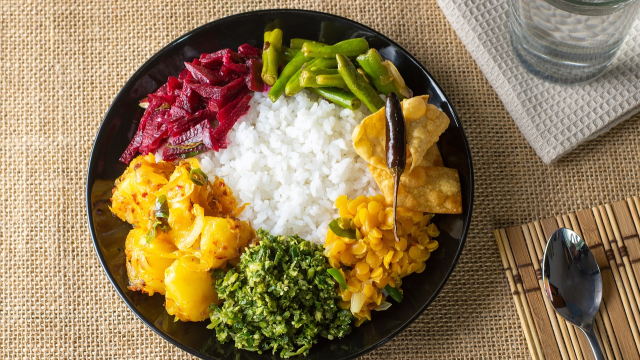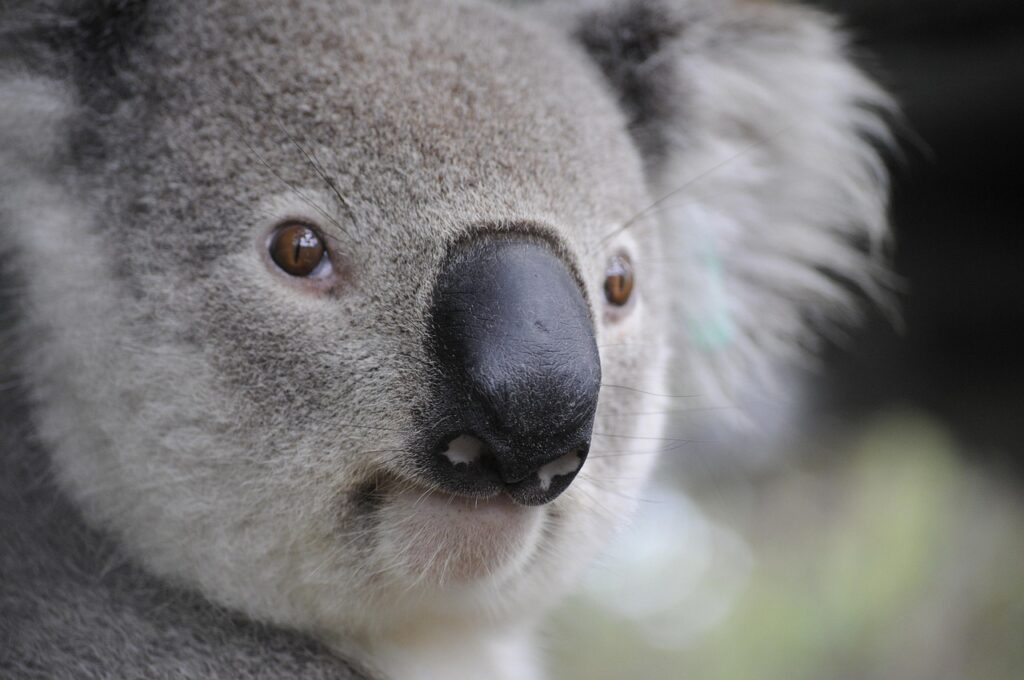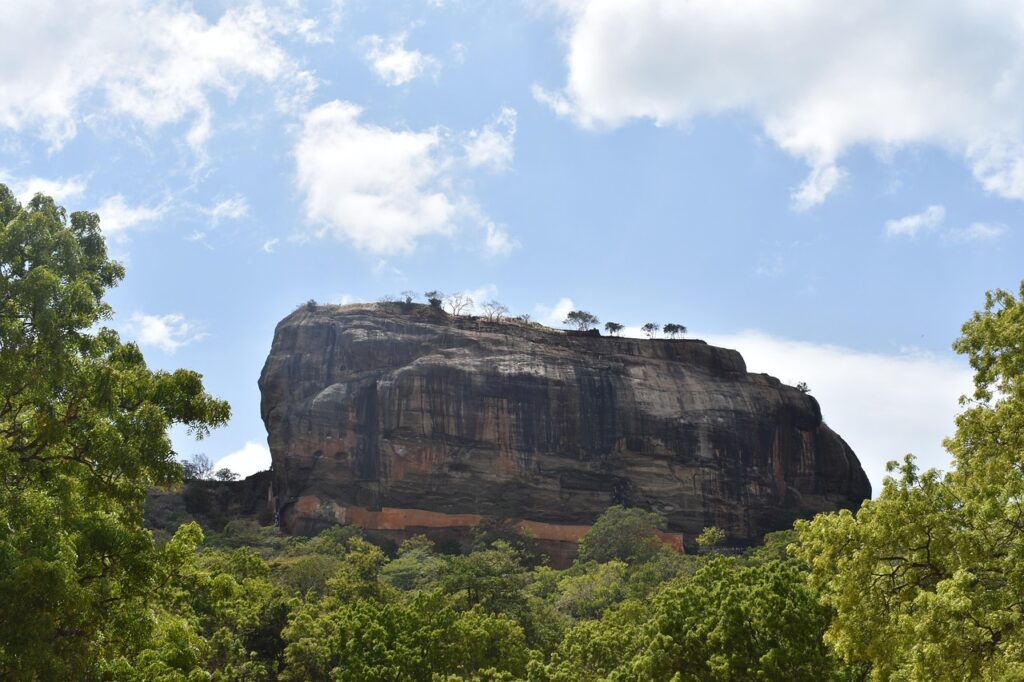The World’s Hardest Military Training Programs: Pushing the Limits of Human Endurance

Military training is designed to break you — physically, mentally, and emotionally — and only the strongest survive. Around the world, elite special forces undergo some of the toughest training regimens known to mankind, pushing the boundaries of endurance, pain, and psychological resilience. Let’s take a deep dive into the most brutal military training programs across the globe — where failure is common, but quitting is never an option. 🇺🇸 U.S. Navy SEALs – Hell Week and Beyond Location: United StatesDropout Rate: Over 75% The SEALs are legendary for a reason. Their BUD/S training, especially the infamous Hell Week, is one of the most grueling experiences a soldier can face. Candidates face days of sleep deprivation, icy ocean drills, nonstop physical punishment, and psychological pressure. Only a small fraction make it to the end and earn the SEAL Trident. 🇷🇺 Russian Spetsnaz – Blood, Ice, and Fire Location: RussiaUnique Challenges: Hand-to-hand combat with live blades, psychological abuse, and winter survival in sub-zero conditions. Spetsnaz troops undergo intense beatings, are taught to ignore pain, and sometimes face extreme situations like getting shot with rubber bullets or stabbed with real knives as part of resilience training. Brutal doesn’t even begin to describe it. 🇰🇷 South Korean UDT/SEAL – Arctic Punishment Location: South KoreaTraining Feature: Sub-zero water dives, snow combat drills South Korea’s elite naval commandos conduct their winter training in blizzards, freezing rivers, and snow-covered battlefields. The goal? Survive and function at peak performance in some of the harshest environments on Earth. 🇮🇱 Israeli Sayeret Matkal – Intelligence + Physical Dominance Location: IsraelFocus: Recon, intelligence, survival Israel’s most elite unit demands both brains and brawn. The training includes language mastery, advanced surveillance, and field combat — often under simulated real-world pressure, like abductions and high-value target raids. 🇬🇧 UK SAS – “Who Dares Wins” in Action Location: United KingdomInfamous Test: The Fan Dance (24km speed march over mountainous terrain) The British Special Air Service (SAS) puts recruits through interrogation simulations, sleep deprivation, and harsh endurance tests, including the legendary “Fan Dance” in the Brecon Beacons. Failure is expected — only a handful pass. 🇫🇷 French Foreign Legion – Brotherhood in Brutality Location: FranceTraining Length: 15 weeks of non-stop endurance The Legion demands absolute discipline. Recruits face heat exhaustion, desert marches, and a strict code of silence and brotherhood. Many join without even speaking French — but those who survive come out as elite warriors with unbreakable bonds. 🇮🇳 Indian Para SF – The Phantom Warriors Location: IndiaSelection Rate: Less than 10% One of the most secretive and feared forces in Asia, the Para (Special Forces) go through 90 days of hellish testing, which includes brutal marches, combat simulations, and survival with minimal food or water. The motto? “Balidaan” – Sacrifice. 🇨🇳 Chinese Snow Leopard Commando Unit – Urban Warfare Experts Location: ChinaSpecialization: Anti-terrorism, hostage rescue These troops undergo obstacle-heavy endurance tests, live fire drills, hand-to-hand combat, and hostage rescue exercises — often under sleep deprivation and in full combat gear. 🇧🇷 BOPE (Brazil) – Warzone Training in the Favelas Location: BrazilKnown For: Real-world urban warfare scenarios Brazil’s BOPE unit is trained to operate in extremely violent environments, often dealing with drug cartels and terrorism. Their physical training is harsh, but the real challenge comes from live missions in deadly favelas. 🌍 Special Forces: World’s Toughest Test (TV Insight) Even Hollywood tried to simulate what special forces endure in the TV show Special Forces: World’s Toughest Test, where celebrities attempt real SF-style training. Most quit in days — showing just how unforgiving this path is, even under simulation. Final Thoughts: Why This Matters to Sri Lanka With Lieutenant Koyan Chamitha recently completing U.S. Navy SEAL training, Sri Lanka has officially entered the conversation about elite global military standards. His success highlights the potential within our forces — and the extreme level of resilience required to operate on this stage.
What It Really Takes to Become a U.S. Navy SEAL: The Brutal Training Behind the Badge

Lieutenant Koyan Chamitha’s achievement as the first Sri Lankan to complete U.S. Navy SEAL training is not just historic — it’s a window into one of the toughest military training programs on Earth. Becoming a Navy SEAL isn’t just about strength — it’s about endurance, mental toughness, teamwork, and a mindset that refuses to quit. The training pipeline is so intense, only the most determined candidates make it through. Let’s break down the process that Lieutenant Chamitha bravely completed — and what makes this journey so extraordinary. The SEAL Training Pipeline: A True Test of Human Limits SEAL candidates go through BUD/S (Basic Underwater Demolition/SEAL) training — a grueling 6-month course that tests everything from physical endurance to psychological resilience. But the most infamous phase? Hell Week. Hell Week: Where 75% Drop Out Hell Week is a five-and-a-half-day stretch during the first phase of SEAL training where candidates get only about four hours of sleep total. The rest is pure, continuous physical and mental exertion — from brutal surf torture to long-distance runs, log carries, and “drown-proofing” exercises in freezing water. “It’s not about how strong you are — it’s about how strong your mind is.” Pain, exhaustion, cold, and sleep deprivation are used to simulate combat stress and weed out those who can’t keep pushing under pressure. Only the few who refuse to ring the infamous “bell” — a symbol of quitting — make it through. 10 Leadership Lessons from the SEALs The SEAL ethos doesn’t just apply to warfare — it offers powerful lessons for leadership and life: These are the same principles Lieutenant Chamitha now brings back to Sri Lanka’s elite Special Boat Squadron (SBS), enhancing not only tactical capabilities but also leadership excellence. A Symbol of Resilience for Sri Lanka By completing this unparalleled training, Lieutenant Koyan Chamitha hasn’t just earned the SEAL Trident — he’s carried Sri Lanka’s flag into one of the most exclusive military brotherhoods in the world. His journey through BUD/S and Hell Week stands as a testament to the resilience, grit, and elite potential within our own armed forces.
Sri Lankan Navy Officer Makes History by Completing U.S. Navy SEAL Training

Lieutenant Koyan Chamitha of the Sri Lanka Navy’s elite Special Boat Squadron (SBS) has become the first-ever Sri Lankan to complete the world-renowned U.S. Navy SEAL training, earning the prestigious SEAL Trident pin. In a historic milestone that reflects both personal excellence and national pride, Lieutenant Chamitha successfully completed the grueling 14-month SEAL training program in the United States — a program recognized globally for its extreme physical and mental demands. With a dropout rate of over 75%, this elite training challenges even the most prepared soldiers. Yet, Chamitha endured and emerged with one of the most respected symbols in military service: the SEAL Trident. A Landmark Achievement for Sri Lanka Lieutenant Chamitha’s accomplishment is not just a personal victory; it is a monumental moment for Sri Lanka’s defense forces. As an officer of the Sri Lanka Navy’s Special Boat Squadron — often compared to other elite special forces units globally — Chamitha’s achievement is expected to bring both international recognition and cutting-edge tactical knowledge back home. This success paves the way for greater cooperation between the Sri Lanka Navy and international military units, especially in areas such as special operations training, maritime security, and counterterrorism. Inspiration for the Next Generation Chamitha’s journey from Sri Lankan shores to the elite ranks of the U.S. Navy SEALs will undoubtedly serve as an inspiration for young military aspirants in the country. His discipline, resilience, and dedication highlight the potential of Sri Lankan forces to compete and succeed on the world stage. National Pride on a Global Stage From Colombo to Coronado, Lieutenant Koyan Chamitha has proven that with determination and discipline, excellence knows no borders. His SEAL Trident is not just a badge of honor — it is a symbol of Sri Lanka’s growing presence in global defense circles. As Sri Lanka celebrates this unprecedented achievement, the nation also looks forward to the invaluable expertise Lieutenant Chamitha will bring back — strengthening the capabilities of the Special Boat Squadron and further enhancing Sri Lanka’s reputation in international military circles.
5 Foods You Must Try When You Visit Sri Lanka In 2025

Sri Lanka is one of the prominent travel destinations in 2025. The island nature which is surrounded by sandy beaches and magnificent natural travel destinations, attracts many tourists. It’s said that you can experience all kinds of weather and landscape when you travel from the south to the north of the country. As the majority of Sri Lankans are Sinhalese, the country is multicultural with few other nationalities like Tamils, muslims and Moors. Not only that their main religion buddhism but there are Hindus, Christians, catholics and Muslims living in the country. Not only that this small island was also colonised by the Dutch and English people too. Under all these kinds of influences, the country has a vast cultural diversity. This affected the country’s food culture. Here we are bringing you the must-try dishes when you travel to Sri Lanka this year. Kottu Roti This simple dish started as a street food and is now popular around the country. The chopped-up roti is mixed with any protein you prefer. However, the most attractive part is how the kottu roti is made. You can enjoy the rhythmic sound how the knives hitting the hot griddle while mixing with the preferred gravy. Egg Hoppers This is a crispy crêpe made with fermented rice flour and coconut milk. There are different kinds of hoppers, and you can eat the simple crepe just made with rice flour with onion sambol or a spicy chicken curry. However, when the carpe accerised with an egg, it hits differently. You can try it with those curries or with a plain Cylone tea. Milk Rice This rice dish is just rice cooked in coconut milk. However, with that simplicity, milk rice holds a cultural value in the country. This dish is normally prepared on special occasions and to offer Lord Buddha or on Poya days. This is paired with onion chilli sambol, and you can even try it with chicken curry or fish curry as you prefer. Rice and Curry Sri Lankan rice and curry is not just a dish but an art. White rice is compared with hundreds of cooked vegetables and fish curries. Sri Lankan spice mixes and coconut milk are used in most of the dishes. Short Eats These small street snacks are found from small street carts to five-star restaurants. It’ll be budget budget-friendly quick snack when you travel around the country. As this will fill you up and will make you experience the marvellous mixture of vegetables and Cylone spice mixtures. Prasanjani Weerasinghe
5 Fascinating Fun Facts About Australia You Probably Didn’t Know

Australia, the land down under, continues to surprise visitors and locals alike with its unique characteristics and quirky traditions. From deadly creatures to unusual wildlife, here are five captivating facts about this remarkable continent that will make you see Australia in a whole new light. 1. Australia Has More Deadly Animals Than Almost Anywhere Else on Earth When people think of dangerous Australian wildlife, they’re not wrong to be cautious. The continent is home to some of the world’s most venomous creatures, including the box jellyfish, funnel-web spiders, and the inland taipan – the world’s most venomous snake. However, despite this fearsome reputation, deaths from these creatures are extremely rare thanks to modern medical care and public awareness. The Sydney Funnel-web Spider hasn’t caused a death since the 1980s, proving that Australia’s wildlife, while formidable, coexists surprisingly well with its human inhabitants. 2. The Great Barrier Reef Can Be Seen from Space Stretching over 2,300 kilometers along Queensland’s coast, the Great Barrier Reef is not only the world’s largest coral reef system but also one of the few living structures visible from space. This natural wonder comprises over 2,900 individual reefs and 900 islands, making it larger than the United Kingdom, Holland, and Switzerland combined. The reef supports an incredible 25% of all marine fish species and provides a home to countless other marine creatures. For Sri Lankan travelers planning their Australian adventure, the reef offers world-class snorkeling and diving opportunities that rival any tropical destination. 3. Australia Has a City That Exists Entirely Underground In the heart of South Australia’s outback lies Coober Pedy, often called the “opal capital of the world.” What makes this town extraordinary is that most of its residents live underground in elaborate cave homes called “dugouts.” The underground lifestyle isn’t just quirky – it’s practical. With surface temperatures reaching 50°C (122°F) in summer, living underground maintains a comfortable 22-25°C (72-77°F) year-round. The town features underground churches, hotels, museums, and even golf courses with no grass – just dirt and oil. This unique adaptation to Australia’s harsh climate showcases the ingenuity of its inhabitants. 4. Melbourne Once Hosted the Olympics Despite Being Winter Here’s a geographical quirk that catches many off guard: when Melbourne hosted the 1956 Summer Olympics, it was actually winter in Australia! Due to the Southern Hemisphere’s reversed seasons, the games took place from November 22 to December 8, during Australia’s late spring. This made Melbourne the first city in the Southern Hemisphere to host the Olympics. The timing created unique challenges – and opportunities – with athletes competing in Australia’s mild winter weather while the Northern Hemisphere experienced its cold season. For visitors from tropical Sri Lanka, understanding Australia’s seasonal flip is crucial for planning the perfect trip. 5. Australia’s Largest Cattle Station is Bigger Than Israel Anna Creek Station in South Australia covers an astounding 23,677 square kilometers (9,142 square miles), making it larger than the entire state of Israel and nearly four times the size of Sri Lanka. To put this in perspective, it would take over 6 hours to drive across the property at highway speeds. The station runs approximately 10,000 cattle across this vast expanse, with some areas so remote that helicopters are the only practical means of transportation. This massive scale exemplifies Australia’s agricultural prowess and the sheer size of the continent – something that constantly amazes visitors from smaller nations. Planning Your Australian Adventure These fascinating facts barely scratch the surface of what makes Australia such an incredible destination. From its unique wildlife to its vast landscapes and innovative solutions to harsh climates, Australia offers experiences unlike anywhere else on Earth. Whether you’re interested in exploring the underwater wonders of the Great Barrier Reef, discovering underground cities, or experiencing the vastness of the outback, Australia promises adventures that will create lasting memories. For more travel inspiration and detailed guides about exploring Australia from Sri Lanka, visit our comprehensive travel section and start planning your next adventure to this remarkable continent. Ready to explore more amazing destinations? Check out our other travel articles and discover your next adventure from Sri Lanka.
Best Places to Visit in Sri Lanka: Ultimate 2025 Guide

Sri Lanka, the pearl of the Indian Ocean, offers an incredible diversity of experiences packed into a compact island nation. From ancient cultural sites and pristine beaches to misty mountains and wildlife sanctuaries, Sri Lanka’s best travel destinations cater to every type of traveler. Whether you’re seeking adventure, relaxation, or cultural immersion, this comprehensive guide will help you discover the most spectacular places to visit in Sri Lanka. 1. Sigiriya Rock Fortress – The Eighth Wonder of the World Standing majestically 200 meters above the surrounding landscape, Sigiriya is undoubtedly one of Sri Lanka’s most iconic landmarks. This ancient rock fortress, built in the 5th century by King Kashyapa, showcases remarkable engineering and artistic achievements that continue to amaze visitors today. The climb to the summit reveals breathtaking frescoes of celestial maidens, intricate water gardens, and panoramic views that stretch across the Central Province. Early morning visits offer the best experience, avoiding crowds and intense heat while capturing golden hour photography opportunities. Best Time to Visit: December to AprilEntry Fee: LKR 4,320 for foreignersPro Tip: Wear comfortable shoes and bring water for the 1,200-step climb Internal Link: Planning Your Sri Lanka Itinerary 2. Kandy – The Cultural Capital of Sri Lanka Nestled in the central highlands, Kandy serves as Sri Lanka’s cultural heart and former royal capital. The sacred Temple of the Tooth Relic (Sri Dalada Maligawa) houses Buddhism’s most precious relic, making it a significant pilgrimage site for millions of devotees worldwide. Beyond its spiritual significance, Kandy offers visitors the Royal Botanical Gardens in Peradeniya, traditional Kandyan dance performances, and scenic lake walks. The annual Esala Perahera festival transforms the city into a spectacular cultural celebration featuring elaborately decorated elephants and traditional ceremonies. Must-See Attractions: External Link: UNESCO World Heritage Sites in Sri Lanka 3. Galle Fort – Colonial Charm Meets Modern Elegance The Galle Fort, a UNESCO World Heritage Site, represents one of the best-preserved colonial fortifications in Asia. Built by Portuguese colonizers in the 16th century and later fortified by the Dutch, this coastal gem seamlessly blends European architecture with South Asian traditions. Wandering through the fort’s cobblestone streets reveals boutique hotels, art galleries, cafes, and museums housed within centuries-old buildings. The ramparts offer spectacular sunset views over the Indian Ocean, while the lighthouse stands as an iconic landmark for photography enthusiasts. Highlights: Internal Link: Best Hotels in Galle Fort 4. Ella – Hill Country Paradise Ella has emerged as one of Sri Lanka’s most popular destinations among backpackers and nature lovers. This charming hill station offers cool climate, stunning mountain views, and numerous hiking opportunities that showcase the country’s natural beauty. The famous Nine Arch Bridge, carved into the mountainside without using any steel, provides Instagram-worthy photo opportunities as trains pass through the scenic landscape. Little Adam’s Peak offers relatively easy hiking with rewarding panoramic views, while Ella Rock challenges more adventurous trekkers. Top Activities in Ella: 5. Yala National Park – Wildlife Safari Adventure Yala National Park boasts the highest density of leopards in the world, making it Sri Lanka’s premier wildlife destination. Spanning 979 square kilometers of diverse ecosystems, the park supports over 44 mammal species and 215 bird species. Safari experiences in Yala offer opportunities to spot elephants, sloth bears, crocodiles, and numerous bird species alongside the elusive Sri Lankan leopard. The park’s varied landscapes include grasslands, forests, lagoons, and coastal areas, creating perfect habitats for diverse wildlife. Safari Tips: External Link: Sri Lanka Wildlife Conservation 6. Anuradhapura – Ancient Civilization Wonder As Sri Lanka’s first capital and one of the world’s oldest continuously inhabited cities, Anuradhapura offers fascinating insights into the island’s ancient Buddhist civilization. This sacred city houses magnificent dagobas (stupas), ancient monasteries, and the sacred Sri Maha Bodhi tree. The archaeological site spans vast areas, requiring full-day exploration to appreciate its historical significance. Cycling remains the most popular way to navigate between the scattered ruins while experiencing the serene atmosphere of this ancient city. Key Archaeological Sites: 7. Nuwara Eliya – Little England of Sri Lanka Nuwara Eliya, situated at 1,868 meters above sea level, offers a refreshing escape from tropical heat with its cool mountain climate. Known as “Little England,” this hill station retains colonial-era charm through Tudor-style architecture, manicured gardens, and tea estates stretching across rolling hills. The region produces some of the world’s finest Ceylon tea, with numerous estates offering guided tours and tastings. Victoria Park provides peaceful walks among colorful flowers, while nearby Horton Plains National Park features the dramatic World’s End cliff formation. Attractions and Activities: Internal Link: Best Tea Estates to Visit in Sri Lanka 8. Mirissa – Whale Watching Capital The coastal town of Mirissa has gained international recognition as one of the world’s best whale watching destinations. Between November and April, blue whales, sperm whales, and dolphins migrate through these waters, offering spectacular marine life encounters. Beyond whale watching, Mirissa’s crescent-shaped beach provides excellent swimming, surfing, and sunset viewing opportunities. The relaxed atmosphere attracts travelers seeking beachside relaxation combined with exciting marine adventures. Marine Life Spotting Season: 9. Polonnaruwa – Medieval Capital Ruins Polonnaruwa served as Sri Lanka’s medieval capital from the 11th to 13th centuries, leaving behind extraordinarily well-preserved ruins that showcase advanced urban planning and architectural sophistication. This UNESCO World Heritage Site offers more compact exploration compared to Anuradhapura while maintaining equal historical significance. The Gal Vihara rock temple features four magnificent Buddha statues carved from a single granite wall, representing the pinnacle of ancient Sinhalese stone carving artistry. The Royal Palace complex and Parakrama Samudra reservoir demonstrate the advanced engineering capabilities of medieval Sri Lankan civilization. 10. Adam’s Peak (Sri Pada) – Sacred Mountain Pilgrimage Adam’s Peak, standing 2,243 meters tall, holds sacred significance for multiple religions due to the mysterious footprint-shaped depression at its summit. Buddhists believe it belongs to Buddha, while Christians and Muslims attribute it to Adam, making this mountain a unique multi-religious pilgrimage site. The challenging 5-7 hour climb traditionally begins at midnight, allowing pilgrims to reach the summit for spectacular sunrise views. The
The Benefits of Meditation: Cultivating a Calmer, Healthier Mind and Body

In our fast-paced, hyperconnected world, stress and mental fatigue have become all too common. Amidst this noise, meditation—a practice dating back thousands of years—offers a powerful, accessible tool for enhancing well-being. Whether you’re seeking mental clarity, emotional balance, or physical health benefits, meditation provides a scientifically supported path to a more grounded life. 1. Reduces Stress and Anxiety One of the most widely recognized benefits of meditation is its ability to reduce stress. Numerous studies have shown that mindfulness and meditation practices decrease levels of cortisol, the body’s main stress hormone. Techniques like focused breathing, body scanning, and mindful awareness help individuals become more attuned to the present moment, creating space between stimulus and response. This can lead to reduced anxiety and improved resilience in the face of daily challenges. 2. Improves Focus and Concentration Meditation, particularly forms like mindfulness and concentration meditation, trains the brain to sustain attention and ignore distractions. Research has found that regular practice enhances cognitive functions such as sustained attention, memory, and decision-making. Just a few minutes a day can make a noticeable difference in how clearly and efficiently you process information. 3. Promotes Emotional Health Beyond managing stress, meditation supports emotional well-being. Mindfulness meditation has been linked to decreased symptoms of depression and increased levels of positive emotions. Through regular practice, individuals often develop greater emotional awareness, self-compassion, and a more balanced perspective on life’s difficulties. 4. Supports Physical Health Meditation isn’t just for the mind; it offers a host of physical benefits. These include lower blood pressure, improved sleep quality, and enhanced immune system function. Studies also suggest that meditation may help reduce chronic pain by changing the way the brain processes pain signals, making it a valuable complement to medical treatment. 5. Enhances Self-Awareness and Personal Growth Certain forms of meditation, like self-inquiry or reflective practices, encourage deeper introspection and self-understanding. This can lead to greater alignment with one’s values, improved relationships, and a stronger sense of purpose. Over time, meditators often report a reduction in negative thinking patterns and an increase in personal empowerment. 6. Accessible and Adaptable One of the greatest strengths of meditation is its versatility. It requires no special equipment and can be practiced virtually anywhere—whether for five minutes or fifty. From guided meditations to silent retreats, there are options to suit every lifestyle and belief system. Meditation apps and online resources have also made it easier than ever to get started. Conclusion Meditation is more than a relaxation technique; it’s a powerful mental discipline with far-reaching benefits for the mind and body. Whether you’re navigating stress, seeking clarity, or striving for emotional balance, a consistent meditation practice can help you cultivate a more mindful, resilient, and fulfilling life. In a world that rarely slows down, meditation invites you to pause—and in that pause, discover peace.
Squid Game Season 3: Everything You Need to Know About the Final Season

The countdown has officially begun for Netflix’s most-watched non-English series of all time. Squid Game Season 3, the highly anticipated finale to the global phenomenon, is set to deliver the ultimate showdown that fans have been waiting for. Here’s your complete guide to everything we know about the third and final season. Squid Game Season 3 Release Date: Mark Your Calendars Squid Game Season 3 will premiere on June 27, 2025, exclusively on Netflix at 3:01 a.m. ET / midnight PT. The global release times are strategically planned to ensure worldwide accessibility: This summer 2025 release date represents the culmination of creator Hwang Dong-hyuk’s vision for the series, bringing the deadly games to their ultimate conclusion. What to Expect: The Final Showdown Season 3 promises to be the most intense chapter yet. “Get ready for the deadliest games yet as the Front Man plunges Gi-hun and whoever might be left with him into a series of life-or-death trials designed to break their spirit”. The season will directly continue from Season 2’s major cliffhanger ending, setting up an epic confrontation between protagonist and antagonist. Key Plot Points to Watch The final season will focus on the climactic battle between Seong Gi-hun (Player 456) and the Front Man, with both characters having reached their breaking points. The season shows “Seong Gi-hun and the players fight for survival in ever-deadlier games, which have dire consequences”. Expect psychological warfare, moral dilemmas, and the revelation of long-held secrets as the series reaches its devastating conclusion. The games themselves are expected to be more brutal and complex than ever before, testing not just physical endurance but mental fortitude. Returning Cast: Familiar Faces in the Final Games The confirmed cast for Season 3 includes Lee Jung-jae, Lee Byung-hun, Wi Ha-joon, Im Si-wan, Kang Ha-neul, Park Gyu-young, Park Sung-hoon, Yang Dong-geun, Kang Ae-shim, Jo Yu-ri, Lee David, and Roh Jae-won. Main Characters Returning Lee Jung-jae returns as Seong Gi-hun, the broken winner of the first games who became determined to stop the deadly competition. His character arc in Season 3 will likely focus on his final attempt to bring down the organization from within. Lee Byung-hun reprises his role as Hwang In-ho, the enigmatic Front Man whose true motivations were revealed in Season 2. The psychological cat-and-mouse game between him and Gi-hun will reach its peak in the final season. Wi Ha-joon continues as Hwang Jun-ho, the detective whose personal connection to the games drives his relentless pursuit of justice. Production Insights and Creator’s Vision Creator Hwang Dong-hyuk has been clear that Season 3 represents his intended conclusion to the Squid Game story. The series, which became Netflix’s biggest non-English hit, will wrap up all major storylines while delivering the social commentary that made it a cultural phenomenon. The production has maintained the same high-quality cinematography, production design, and attention to detail that made the first season a visual masterpiece. Expect the same vibrant, unsettling aesthetic contrasted with the brutal reality of the games. Why Squid Game Season 3 Matters Cultural Impact Since its debut in 2021, Squid Game has transcended entertainment to become a cultural touchstone, sparking conversations about economic inequality, social justice, and human nature. The series has been analyzed by academic institutions and featured in discussions about modern Korean culture and global streaming trends. The final season carries the weight of concluding these themes in a satisfying manner. Much like how Sri Lankan culture has influenced global recognition, Korean entertainment continues to shape international conversations about society and humanity. Netflix’s Biggest Bet As Netflix’s most successful non-English original series, Season 3 represents a crucial moment for the streaming platform’s global content strategy. The series has proven that international content can achieve unprecedented worldwide success, fundamentally changing how streaming platforms approach international content. This trend toward global entertainment consumption reflects the changing landscape of digital media, where audiences increasingly seek diverse content from different cultures. For more insights into global entertainment trends, check out our latest entertainment coverage. What Makes Season 3 Different This final season promises to be darker and more psychologically complex than its predecessors. Unlike previous seasons that gradually built tension, Season 3 starts at maximum intensity and never lets up. The games themselves are expected to be more elaborate and deadly, reflecting the escalated stakes. The season will also provide closure to character arcs that have been developing across the series, including the complex relationship between Gi-hun and the Front Man, the fate of the organization running the games, and the ultimate question of whether the cycle of violence can be broken. Viewing Recommendations Catch Up Before June 27 If you need to refresh your memory or catch up on the series, both Season 1 and Season 2 are available for streaming on Netflix. The series builds heavily on character development and plot points from previous seasons, making it essential viewing before diving into the finale. You can also explore behind-the-scenes content and creator interviews on Netflix’s official YouTube channel to better understand the series’ deeper themes. What to Watch For Pay special attention to the psychological development of main characters, the evolving rules of the games, and the broader social commentary that has made Squid Game more than just entertainment. For readers interested in cultural storytelling and global narratives, explore our collection of international stories that showcase how entertainment shapes social discourse worldwide. The End of an Era Netflix’s global phenomenon, Squid Game, is getting ready to say goodbye with its third and final season. This conclusion marks the end of one of the most influential television series of the 2020s, a show that changed how audiences consume international content and sparked global conversations about inequality and human nature. Season 3 isn’t just the end of a story—it’s the completion of a cultural phenomenon that will likely influence entertainment for years to come. Whether you’re a longtime fan or new to the series, June 27, 2025, represents a television event you won’t want to miss. For more breaking entertainment news
10 Sri Lankan Words Added to the Oxford Dictionary – A Cultural Milestone

🌟 1. Asweddumize Definition: to prepare (fallow or disused land) for cultivation, especially for growing rice. First attested in 1857, it reflects Sri Lanka’s deep agrarian traditions. 🌟 2. Avurudu Definition: the Sinhala and Tamil New Year (mid‑April), rich in rituals, traditional foods, games, and celebrations. A uniquely Sri Lankan festive concept. 🌟 3. Kiribath Definition: traditional Sri Lankan dish made of rice boiled in coconut milk, especially eaten during Avurudu. Its inclusion highlights regional festive cuisine. 🌟 4. Kottu roti Definition: iconic street food—chopped roti sautéed with meat, vegetables, and spices, noted for its rhythmic “kottu-kottu” cooking sound. A sensory and cultural staple. 🌟 5. Mallung Definition: a side dish of lightly cooked greens (usually spinach or herbs) mixed with coconut and spices—nutritious, flavorful, and everyday Sri Lankan fare. 🌟 6. Watalappam Definition: a creamy Muslim dessert made from coconut milk, jaggery, eggs, and spices, often served at festive occasions. 🌟 7. Baila Definition: a lively music genre rooted in Portuguese-Sri Lankan fusion, typically performed during dances and celebrations. 🌟 8. Papare Definition: energetic brass-and-drum bands played at cricket matches and parades—synonymous with festive fanfare. 🌟 9. Walawwa Definition: the grand ancestral manor or mansion of a Sri Lankan estate. A term tied to the island’s colonial architecture. 🌟 10. Osari Definition: the traditional Sinhala-style sari. Reflects local ethnic dress and cultural identity. Why this update matters ✔️ Cultural recognition: The inclusion of these words acknowledges Sri Lanka’s linguistic heritage on the world lexicon. hirunews.lk+1newswire.lk+1✔️ Diversity of usage: Words range from agronomy (asweddumize) to street culture (kottu roti) to musical tradition (baila, papare)—demonstrating wide societal representation.✔️ Global awareness: Through English speakers worldwide, these terms gain visibility, preserving and sharing Sri Lankan identity. How words get in Oxford editors rely on extensive evidence from literature, media, academic writing, and public usage. Many borrowed words fill nuanced “lexical gaps” in global English—similar to how “gigil” (Philippine) and “alamak” (Malaysian/Singaporean) were added earlier this year What do you think? These new additions give Sri Lankan English a stronger voice in global dictionaries. Which is your favourite? Are there local terms you use every day that deserve inclusion next? Let me know in the comments!
10 Small Business Ideas You Can Start at Home in 2025

Starting a small business from home has never been more accessible. With digital tools, remote work, and shifting consumer behaviors, 2025 is a great year to turn your passion into profit—all from the comfort of your home. Whether you’re looking for a side hustle or a full-time gig, these 10 home-based business ideas offer flexibility, low startup costs, and high potential. 1. Freelance Writing and Content Creation With businesses investing more in content marketing, freelance writing is in high demand. From blog posts and newsletters to social media copy, brands are constantly seeking quality content. Platforms like Upwork, Fiverr, and LinkedIn are great places to find clients. SEO Tip: Niche down to a specific industry (e.g., tech, health, or finance) to attract high-paying clients. 2. Online Tutoring or Coaching If you’re an expert in a subject—academic or practical—you can offer one-on-one or group sessions virtually. Services like Preply or Teachable allow you to monetize your skills in languages, math, music, or even business coaching. 2025 Trend: There’s increasing demand for soft skills like emotional intelligence and communication coaching. 3. Print-on-Demand Store You can sell custom-designed merchandise without holding inventory. Print-on-demand platforms like Printful and Printify integrate with Shopify or Etsy, making it easy to launch and manage your online store from home. Pro Tip: Use AI tools to generate trendy designs and stay ahead of the competition. 4. Virtual Assistant (VA) Services As remote businesses grow, so does the need for virtual assistants. Tasks may include managing emails, scheduling, customer service, and social media management. Best For: Organized individuals with good communication and time management skills. 5. Etsy Shop for Handmade Goods If you’re crafty, an Etsy shop can be a lucrative outlet. In 2025, there’s growing consumer interest in unique, sustainable, and handmade items. Popular Categories: Jewelry, candles, pet accessories, and home decor. 6. Social Media Management Small businesses often lack the time or skills to manage their online presence. If you’re social media savvy, you can offer content creation, engagement, and analytics services for local brands or influencers. Bonus: Master TikTok or Instagram Reels to stand out in a crowded field. 7. Affiliate Marketing Blog or YouTube Channel Build a niche blog or YouTube channel and earn commissions by promoting products you love. Choose a specific niche like fitness gear, home tech, or sustainable living to grow a loyal audience. Monetization: Use affiliate programs from Amazon, ShareASale, or individual brands. 8. Pet Services Business If you love animals, consider launching a pet sitting, grooming, or homemade pet treats business from home. You can market your services locally or even sell products online. In 2025: There’s rising demand for organic and holistic pet care products. 9. Digital Products and Courses Sell eBooks, digital planners, templates, or online courses. Once created, these products can generate passive income with minimal ongoing effort. Hot Niches: Personal finance, productivity, and wellness. 10. Remote Tech Support or Web Design Tech-savvy individuals can offer services such as website building, app troubleshooting, or WordPress management. Many small businesses look for freelancers who can provide affordable solutions remotely. Get Started: Build a portfolio using free platforms like Wix, Carrd, or WordPress. Final Thoughts Starting a home-based business in 2025 is all about leveraging your skills, understanding market trends, and building your brand online. Whether you prefer creative work, tech services, or helping others grow, there’s a business model for you. Ready to take the first step? Start small, stay consistent, and turn your passion into a profitable home business this year.
